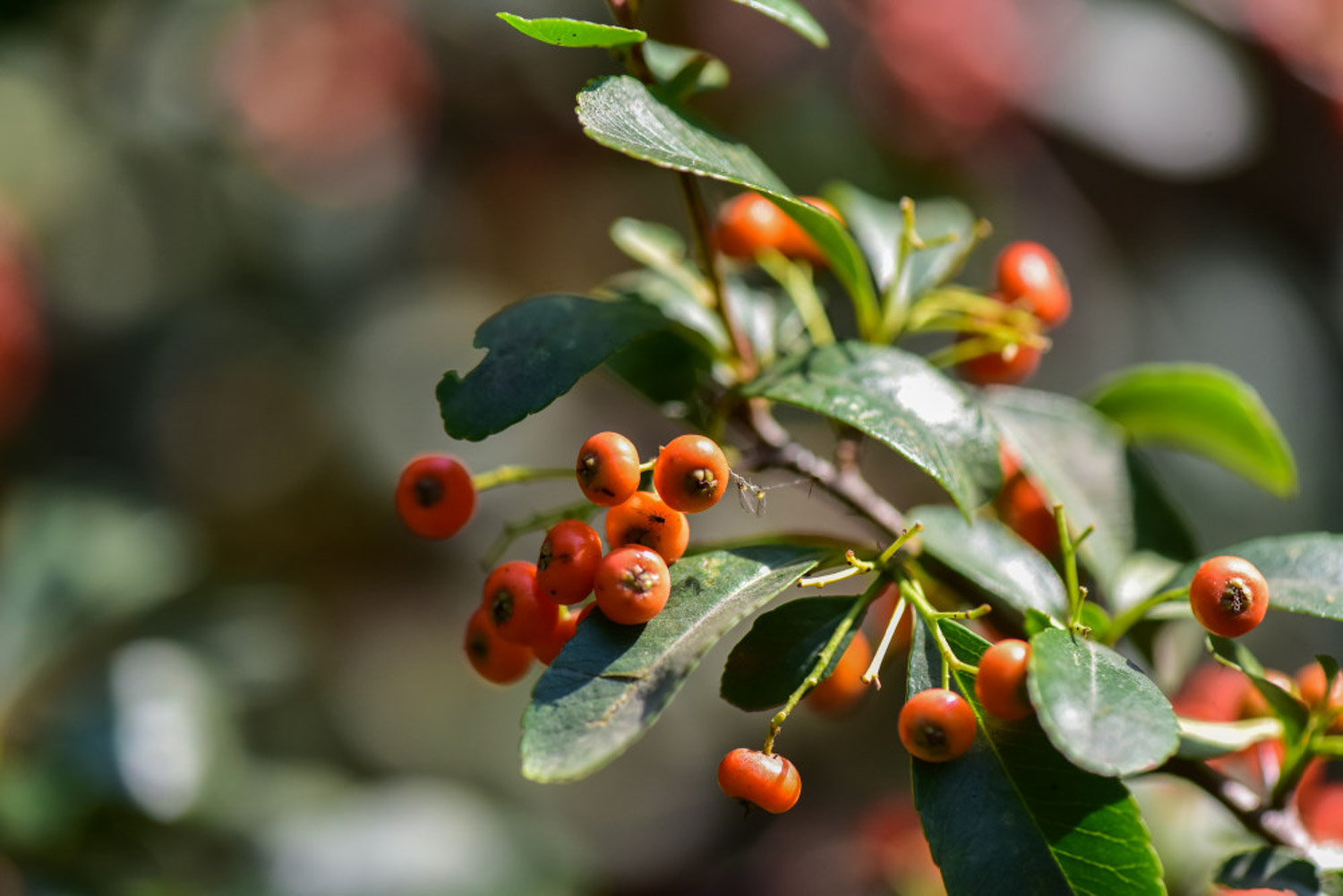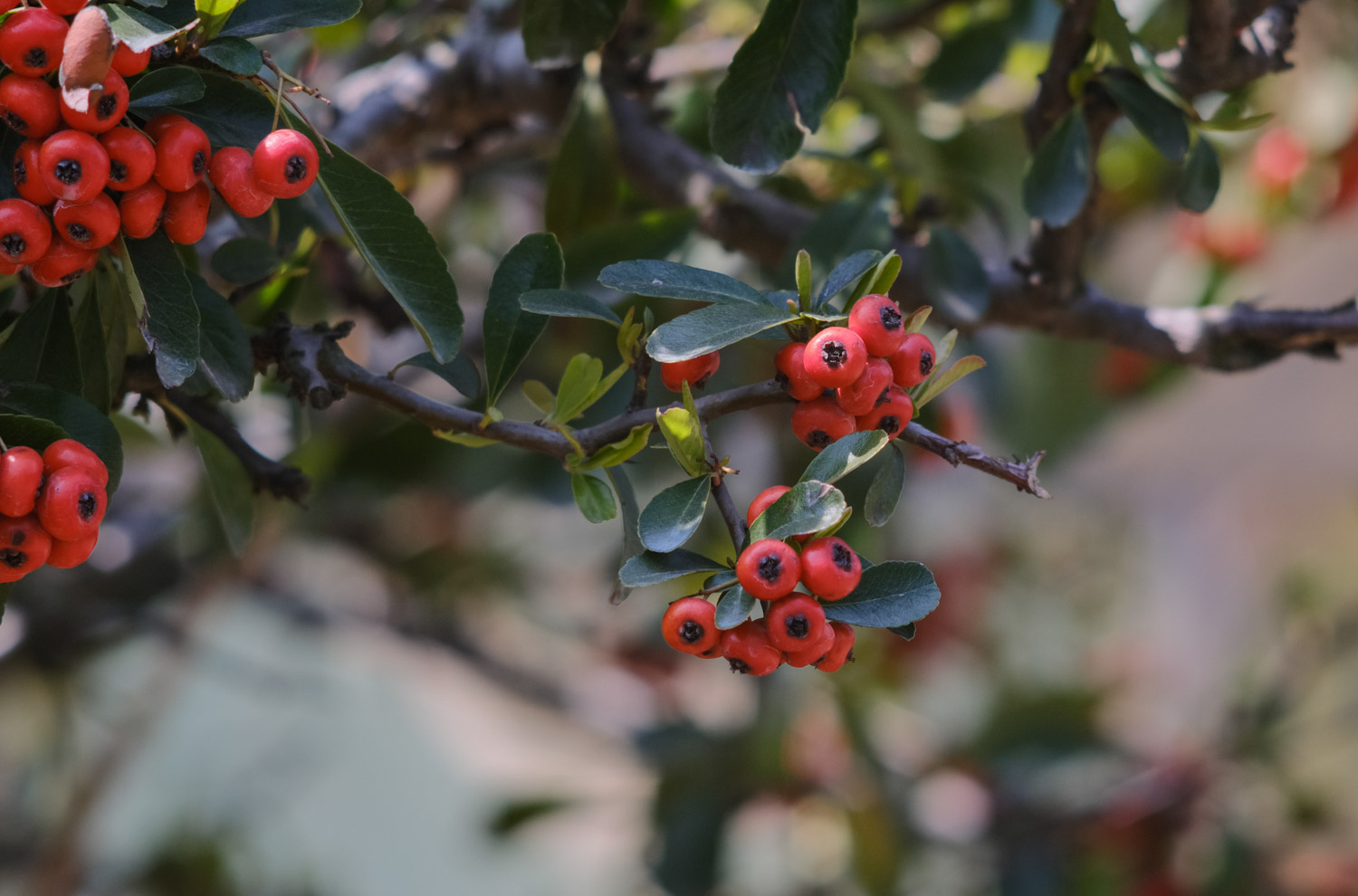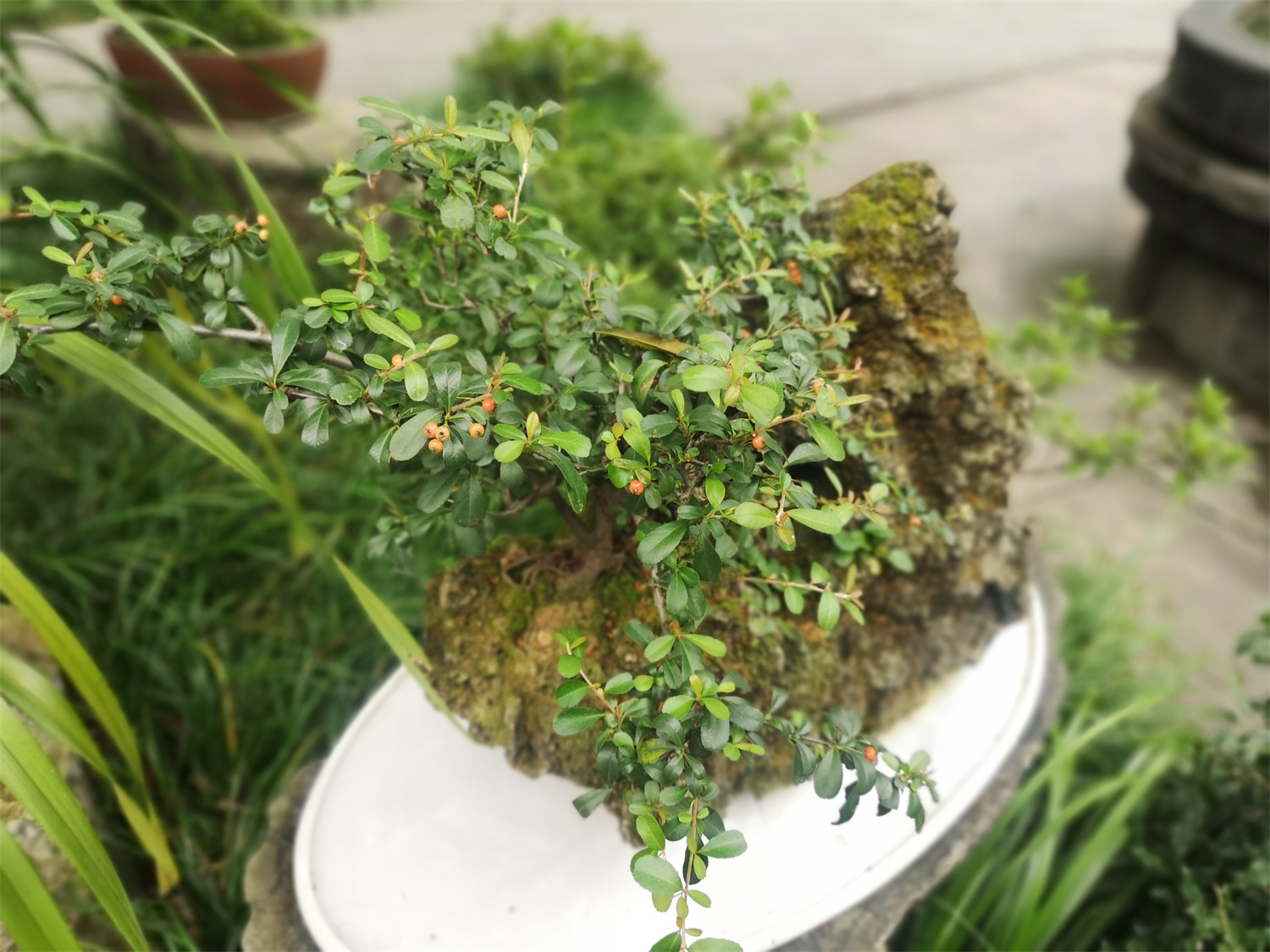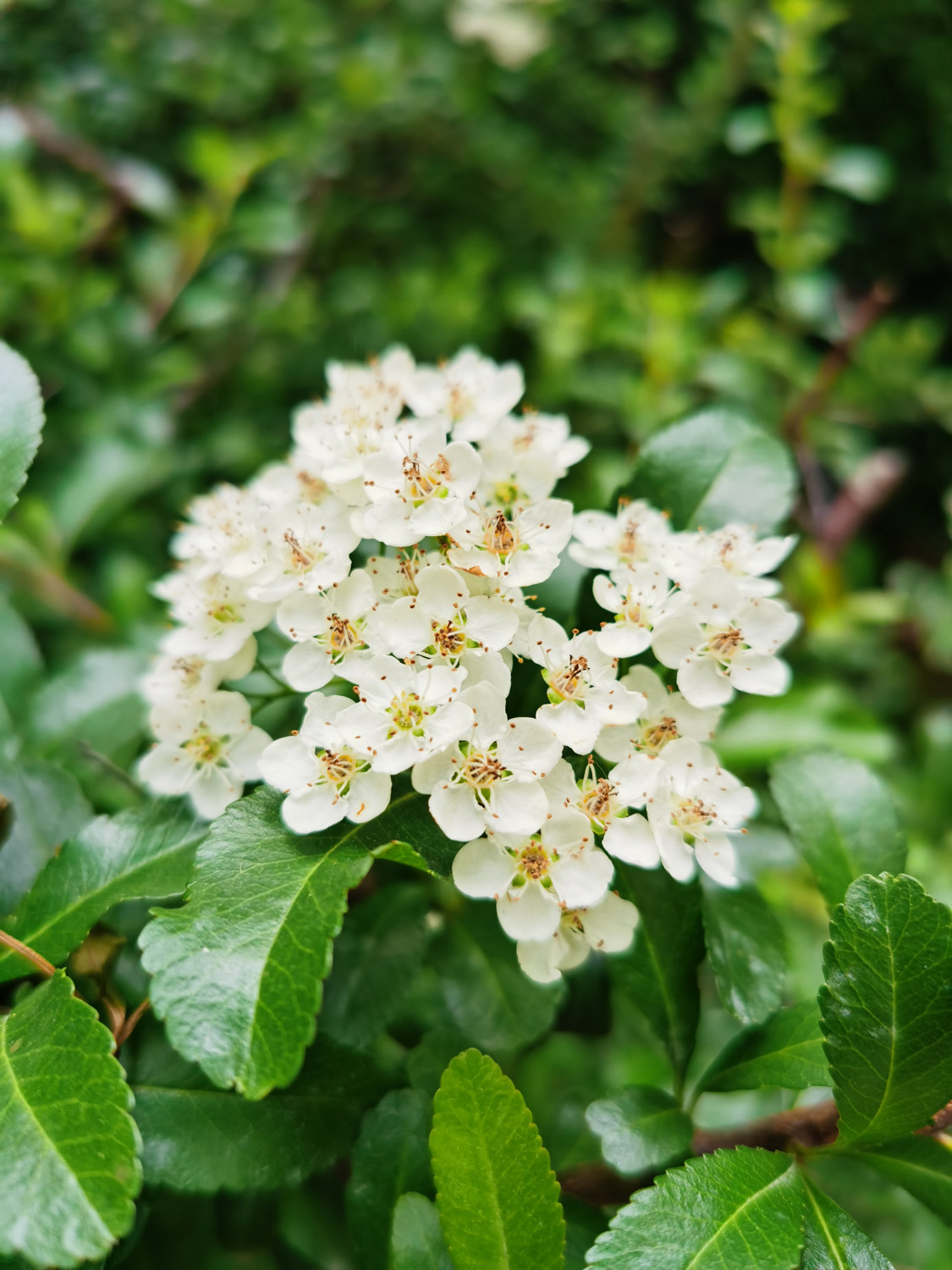Place
Pyracantha fortunei is a positive tree species and likes sunshine. In the growth period, it can be put under the condition of direct sunlight to ensure its flowering and fruiting. In the process of maintenance, it should be noted that it must be placed outdoors during the flowering period to attract insect pollination and ensure the flowering and fruit setting of bonsai
Watering and fertilization
Pyracantha rhamnoides has developed root system and likes big fertilizer and large water, but it is necessary to keep proper water and fertilizer. The basin soil shall be dry and wet, and ponding shall be avoided. During the flowering period of Pyracantha, in order to ensure pollination, rain water should be avoided on the flowers. Pyracantha rhamnoides needs a lot of fertilizer because of its long growth period, vigorous growth and many flowers and fruits. Generally, fertilizer dominated by phosphorus and potassium fertilizer is applied in summer. Continue to use phosphorus and potassium fertilizer in autumn to promote fruit ripening and coloring

Seasonal management
Pyracantha rhamnoides has the characteristics of many fruits, long fruit period and early germination. Therefore, after hibernation, it is necessary to pick fruits and supplement fertilizer in time. Fruit picking is a necessary condition for more flowers and fruits in the coming year
If the fruit is kept on the plant, it can not fall until May and June of the following year, which not only consumes a lot of nutrition of the plant itself, but also is not conducive to flowering and fruit setting in that year; Timely supply of nutrients is another condition for robust and vigorous growth of spring buds. Generally, phosphorus and potassium fertilizer can be applied in time in summer. Better wet than dry
In autumn, we should continue to apply phosphorus and potassium fertilizer to promote fruit ripening and coloring
It can be viewed indoors in winter. Ventilation is required. The temperature should not be too high, the temperature should not be too high, and the sun is sufficient. Otherwise, it will fall leaves, send winter buds or die of excessive water loss. It is best to apply solid fertilizer on the basin. In case of overwintering outdoors, avoid the dry wind to cause injury. As long as the basin soil is dry and wet properly, the low temperature of – 10 ℃ will not cause damage

Trim shaping
For the finished Pyracantha bonsai, spring is the beginning of another growth cycle, and the growth in spring is the basis to ensure flowering and fruiting. In late spring, early summer and even autumn, mainly pruning and shoot beating. Pruning and shoot beating are mainly to maintain the original plant type. Autumn is another growth peak, and nitrogen fertilizer is prohibited. The best way to shoot is to remove the top advantage, so as to avoid the consumption of nutrients by autumn shoots, which will bring disadvantages to overwintering and fruit setting
Basin changing time
Change the basin once a year in late autumn. When changing the basin, the old roots at the edge of the basin shall be cut off and enough base fertilizer shall be applied. Be careful not to nest roots. For vegetative plants without fruit, pots can be changed all year round

Pest control
Pyracantha fortunei is vulnerable to diseases and insect pests. The main diseases are black rot and powdery mildew, especially powdery mildew is very serious. During the control, carbendazim and tobuzin and other fungicides are mainly used, and the branches and leaves or roots are sprayed. Usually in a ventilated clean environment, adequate light and vigorous growth, can significantly reduce the incidence rate. Aphids and red spiders are the most common pests. Trichlorfon and dimethoate emulsion can be sprayed in time. Generally, spray the medicine in the afternoon, once every three days, at least three times


 how many times do yo...
how many times do yo... how many planted tre...
how many planted tre... how many pine trees ...
how many pine trees ... how many pecan trees...
how many pecan trees... how many plants comp...
how many plants comp... how many plants can ...
how many plants can ... how many plants and ...
how many plants and ... how many pepper plan...
how many pepper plan...
































